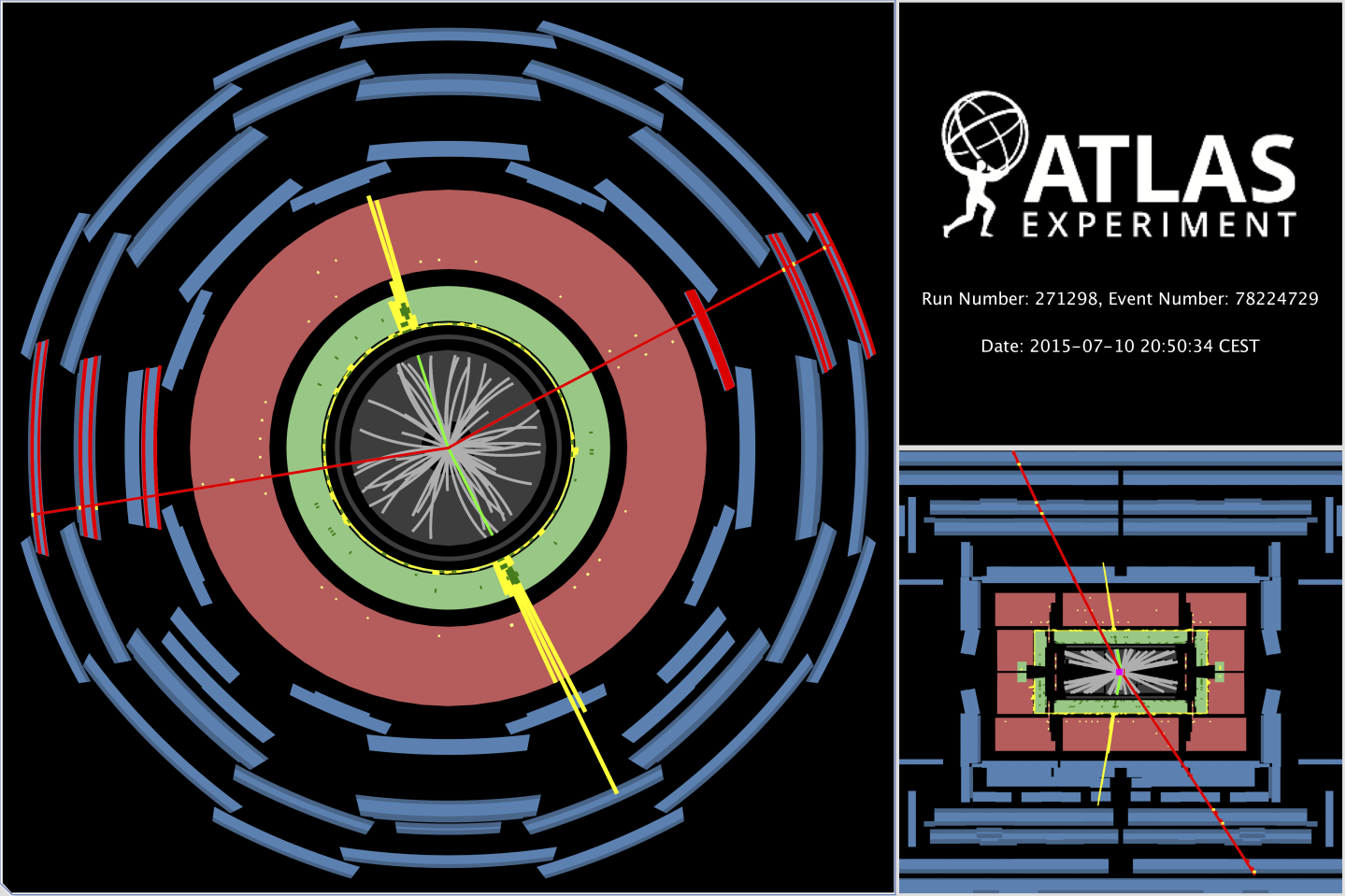
ATLAS candidate event for a Higgs boson decaying into two Z bosons, one decaying into two oppositely charged muons (red) and the other into two oppositely charged electrons (green tracks leading to yellow energy deposits). (Image: ATLAS/CERN)
Where did all the antimatter go? After the Big Bang, matter and antimatter should have been created in equal amounts. Why we live in a Universe of matter, with very little antimatter, remains a mystery. The excess of matter could be explained by the violation of charge-parity (CP) symmetry, which essentially means that certain processes that involve particles behave differently to those that involve their antiparticles.
However, the CP-violating processes that have been observed so far are insufficient to explain the matter-antimatter asymmetry in the Universe. New sources of CP violation must be out there - and might be hiding in interactions involving the Higgs boson. In the Standard Model of particle physics, Higgs-boson interactions with other particles conserve CP symmetry. If researchers find signs of CP violation in these interactions, they could be a clue to one of the Universe's oldest mysteries.
In a new analysis of its full dataset from Run 2 of the LHC, the ATLAS collaboration tested the Higgs-boson interactions with the carriers of the weak force, the W and Z bosons, looking for signs of CP violation. The collaboration studied Higgs-boson decays into two Z bosons, each of which transforms into a pair of leptons (an electron and a positron or a muon and an antimuon), thus resulting in four charged leptons. The researchers also studied interactions in which two W or Z bosons combine to produce a Higgs boson. In this case, one quark and one antiquark are produced together with the Higgs boson, creating 'jets' of particles in the ATLAS detector.
These interactions are ideal testing grounds for CP violation. When CP symmetry is conserved, the pattern of behaviour of the detected jets and leptons should be the same when particles are exchanged with their antiparticles and their directions of flight are reversed. However, if CP symmetry is violated, particles and antiparticles behave differently.
ATLAS scientists summarise all the information about the particles detected in these processes in a single number: the optimal observable. A special feature of this observable is that its value measured for antiparticles should be equal but opposite in sign to that of the particles. If a process conserves CP symmetry, the mean value of the optimal observable in the data should be zero. If it doesn't, the mean value would shift away from zero.
In its new analysis, ATLAS used the observed values of the optimal observable to directly place limits on the possible amount of CP violation. The researchers also measured how often each value of the optimal observable occurred in the data, after correcting for any experimental effects. This measurement enabled ATLAS to compare the data with theoretical predictions in a model-independent way and to test the validity of the underlying theoretical assumptions. This is the first time that a measurement of a Higgs-boson decay into four leptons has allowed physicists to detect potential signs of CP violation in a model-independent way, without strongly relying on aspects of the Standard Model prediction other than CP symmetry.
All the results look compatible with the Standard Model expectation, representing another important confirmation of the current theory of nature. However, this is just the first step. Small CP-violating signals remain compatible with the data, and ATLAS is already collecting new collision data at unprecedented energies that will allow the precision of these measurements to be increased - further homing in on the nature of the Higgs boson.






